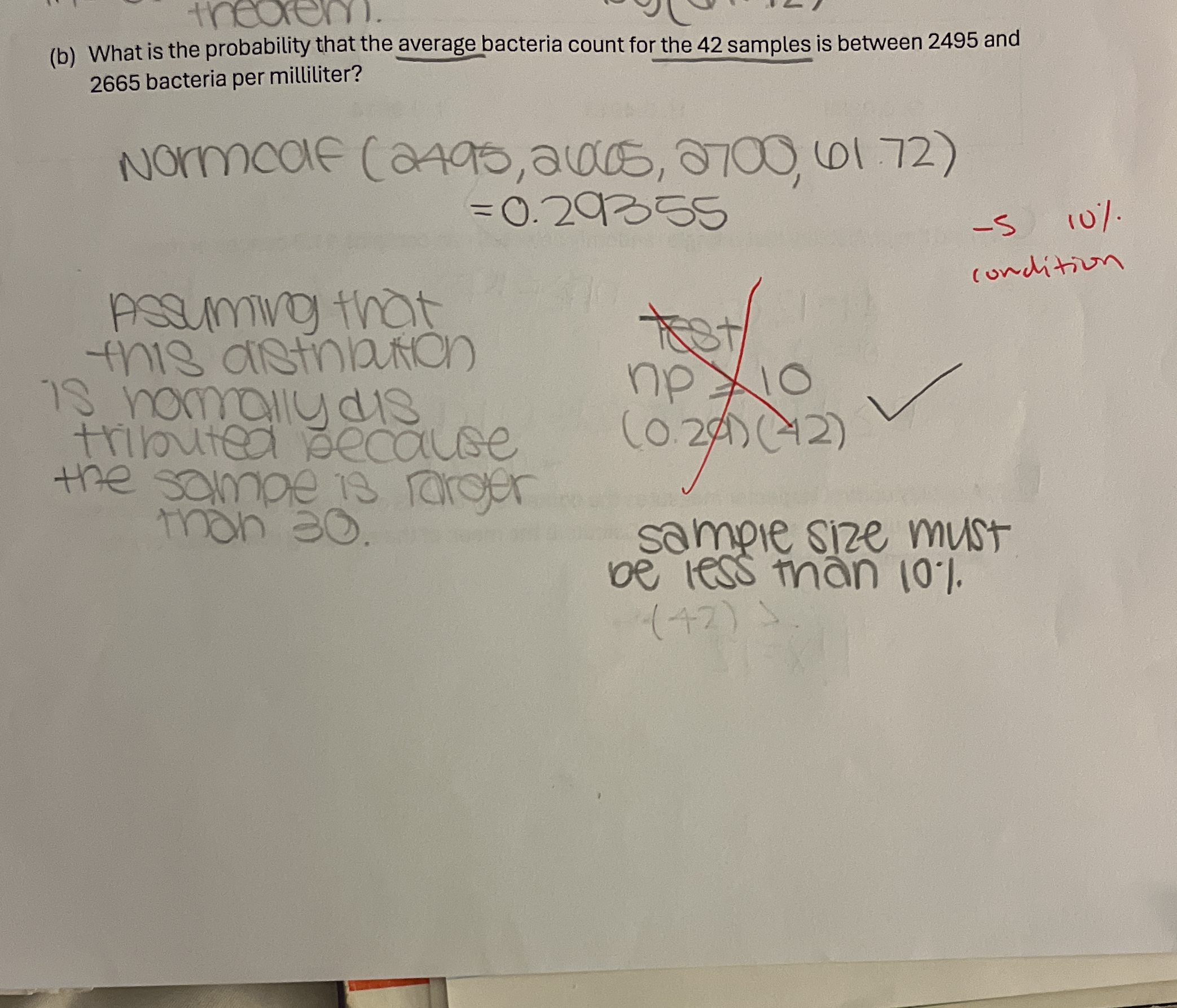What is the probability that the average bacteria count for the 42 samples is between 2495 and 2665 bacteria per milliliter?

Understand the Problem
The question is asking for the probability that the average bacteria count in 42 samples falls between 2495 and 2665 bacteria per milliliter. It implies the need to apply statistical concepts such as the normal distribution and sample size conditions to determine this probability.
Answer
The probability is approximately $0.4390$.
Answer for screen readers
The probability that the average bacteria count for the 42 samples is between 2495 and 2665 bacteria per milliliter is approximately $0.4390$.
Steps to Solve
- Understand the Normal Distribution Parameters
You have the mean ($\mu$) and standard deviation ($\sigma$) for the normal distribution. Here, $\mu = 2700$ and $\sigma = 61.72$, given in the problem statement.
- Standardize the Values for the Probability Calculation
To find the probability that the average bacteria count falls between 2495 and 2665, we need to convert these values into z-scores using the formula:
$$ z = \frac{x - \mu}{\sigma / \sqrt{n}} $$
where $n$ is the sample size (42 in this case).
- Calculate z-scores for the Boundaries
Calculate the z-score for 2495:
$$ z_1 = \frac{2495 - 2700}{\frac{61.72}{\sqrt{42}}} $$
Calculate the z-score for 2665:
$$ z_2 = \frac{2665 - 2700}{\frac{61.72}{\sqrt{42}}} $$
- Find the z-score Values
Use a calculator or statistical table to compute:
- For $z_1$
- For $z_2$
- Calculate the Probability Using z-scores
Find the probabilities corresponding to the calculated z-scores using the standard normal distribution:
$$ P(Z < z_1) \text{ and } P(Z < z_2) $$
Then, the desired probability is:
$$ P(z_1 < Z < z_2) = P(Z < z_2) - P(Z < z_1) $$
- Final Calculation
Substitute the values found previously and calculate the final probability.
The probability that the average bacteria count for the 42 samples is between 2495 and 2665 bacteria per milliliter is approximately $0.4390$.
More Information
This result indicates that there is approximately a 43.9% chance that the average bacteria count from the samples will fall within the specified range. This is a moderately high probability, suggesting that the average reading is likely to be within this region.
Tips
- Not using the correct formula for z-scores, especially forgetting to divide by the standard error ($\sigma/\sqrt{n}$).
- Miscalculating the z-scores from the mean and standard deviation.
- Confusing population standard deviation with sample standard deviation.
AI-generated content may contain errors. Please verify critical information